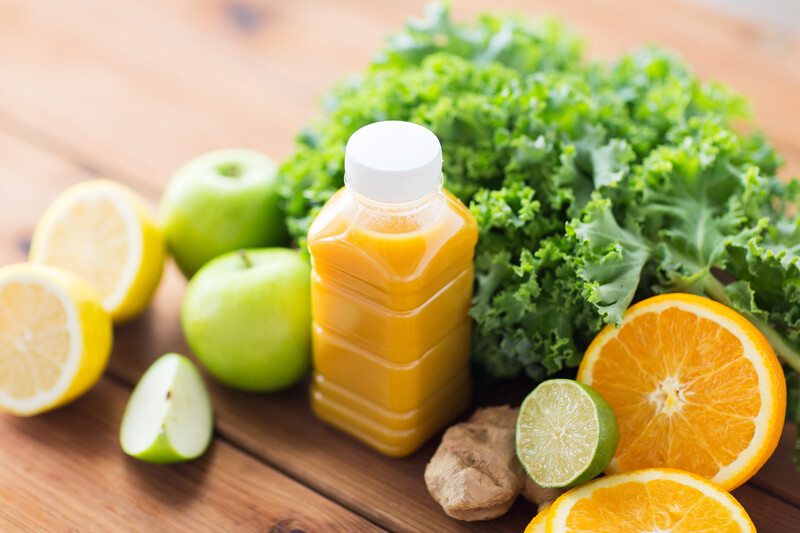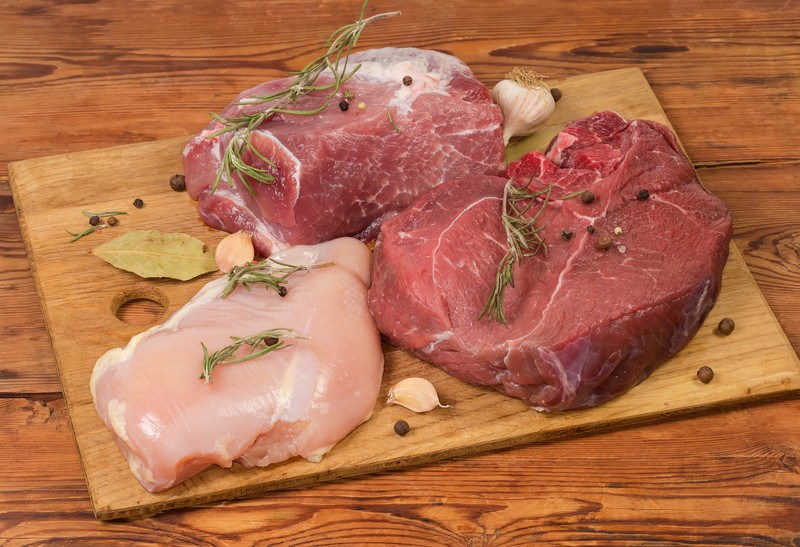
You’re probably thinking why low sodium foods (especially when one does not have any medical condition like heart or kidney problem or high blood pressure), well simply because you wouldn’t want to start too late. Most of the sodium consumed by Americans (and by most we mean a staggering 71%) came from processed and restaurant foods. Only 6% comes from cooking or food preparation and 5% are added at the table. So, if you don’t have any medical condition yet, you’re very well on your way if you’re not going to watch out for the food that you eat.
According to 2020-2025 Dietary Guidelines for Americans, for a healthy eating pattern, one should consume less than 2,300 mg of sodium each day which is equivalent to a teaspoon of table salt (even less for children 13 and below). Now you might think, a teaspoonful of salt is a lot – sure, if you’re going to stuff it in your mouth as is. But sodium can add up pretty quickly as you eat throughout the day, and before you know it, you’ve consumed more than 3,000 mg of sodium just like that.
Most of the food we eat may seem healthy enough or innocently seemed low-sodium because they don’t really taste salty, but you’d be surprised that they’re one of the top sources of sodium. These foods include bread and rolls, pizza, sandwiches, cold cuts and cured meats, soups, burritos and tacos, savory snacks, chicken, cheese, and eggs and omelets. Shocked? I know. Who would have thought that a healthy-looking turkey sandwich with cheese, lettuce, and mustard could easily give you 1,522 mg of sodium?
So why sodium is a problem again? Because too much sodium in our body would mean we’ll likely overwork our kidneys to keep up with the excess sodium in our blood. When that happens, our body holds on to water to dilute sodium which will then mean the fluid surrounding cells and the blood in the bloodstream are increased as well. Now ultimately, our heart will have to work harder to keep pumping and more pressure is now given to the blood vessels. If these keep up, it’s easy to see how heart problems and high blood pressure will soon become an issue.
Just like how reducing carb intake can help with weight loss and those with or at risk of type 2 diabetes, reducing sodium intake also exhibits positive health benefits and is just as important. Embracing a diet with low sodium foods help reduce cardiovascular or hypertension risk. That said, it’s important to know the low sodium foods that you can include in your diet. See our list here and check out some tips as well on how you can successfully transition to a lower sodium diet.
Low Sodium Foods
Fruits and vegetables

All fruits whether fresh, frozen, dried, or canned like apples, pears, peaches, berries, cherries, pineapples, tangerines, watermelon, and bananas are low in sodium. And likewise fresh and most frozen vegetables contain very little sodium. Sundried tomatoes for instance contain 89 mg sodium per ½ cup serving while a medium raw pepper or jalapeno has zero sodium.
They say the best indicator of whether something is low sodium is if it doesn’t contain a label – meaning the food didn’t go through any processing and is closest to its natural state.
Breads, cereals, grains

Generally, rice and pasta are very low in sodium but to be sure that no salt is added always check the labels. If there are other options, take the time to compare them. A cup of rice contains no salt while a cup of puffed cereals has about 220 mg sodium content.
Whole grain bread, granola, rolled oats, and plain breadsticks are good choices as well. These are low sodium food, now you have to watch out for what you’re going to add to them. A low sodium whole grain bread will be of no use if you’re going to stuff it with bacon and cheese.
Fresh meats (or frozen)

Fresh and frozen meats are generally low in sodium. Always opt for the fresh ones whenever you can. If only frozen meats are available, check the labels to see whether sodium is added and if so, how much is contained in the package. Always take time to compare labels and choose the better option.
Processed meats like ham, cold cuts, hot dogs, sausages, and the likes, are treated heavily with salt to preserve it and to add flavor and texture. It’ll be best to totally avoid these foods in your diet, if that seems far-fetched then simply start by eating them occasionally.
If you need to supplement protein, there are plenty of low-sodium protein powder brands as well.
Dairy

To fill up your dairy needs, opt for milk for it contains virtually no sodium. Go for the fat-free or low-fat version. Choose yogurt more often over cheese which can be high in sodium – unless you’re going for low sodium cottage cheese with 20 mg sodium for every ½ cup or Swiss cheese with 35 mg sodium per 50g.
Fruit flavor yogurt contains 67 mg sodium per 175 ml, so you can enjoy that, too! Cream, sour cream, and ice cream are also low sodium foods and are delicious sources for your daily dairy needs.
Fats

When choosing fats to use for cooking choose vegetable oil or unsalted butter. For your salad opt for low sodium salad dressing or homemade vinaigrette with no salt over Caesar’s salad dressing – this way, you can enjoy a truly healthy salad bowl.
If you’re still craving the flavor of regular butter, then do so but be cautious because a tablespoon already contains 93 mg sodium – you have to consider what food are you going to add it to. If let’s say, you’re simply sauteing green beans, then you’re still good since vegetables are naturally low in sodium.
Condiments

Experiment with different herbs and spices to flavor your food. You don’t have to heavily rely on salt to make food tasty. You’ll be pleasantly surprised even, how the food’s natural flavor is enhanced with the addition of one or two spices or herbs.
If you really must, choose condiments in their low sodium version – low sodium ketchup, low sodium tomato sauces, and the like. Opt for vinegar, lemon, fresh horseradish, mustard, Tabasco, or jam and jellies.
Transitioning to a Lower Sodium Diet
If you’ve made up your mind (and you should have by now), know that transitioning into a diet with lower sodium content can be achieved. It can get tricky for some, especially when you’ve already developed an acquired taste for everything salty – it’s quite understandable why the omission of salt (or even limiting the amount) would seem like the end of the world for you. Well, know that it’s not. Let’s start with that. It is doable and you’re going to start right here.
Make time for cooking
Whenever you can, always opt for home-cooked meals. Just like we’ve mentioned above, 71% of the sodium we consumed came from processed and restaurant foods. If you do the cooking yourself, you know what goes into your food. You are also likely to be more mindful of what you eat once you realized what it takes to make a particular dish. For instance, now that you know that BLT sandwiches are not exactly low-sodium, you’ll feel the need to eat it sparingly or at least make a healthier version now that you’re minding the kitchen.
Get acquainted with herbs and spices
Most people thought that salt is the only way to season your food, well, guess what, it’s not. Make use of the herbs and spices like garlic, ginger, turmeric, pepper, rosemary, dill, lemon, and so much more. Just give it a try, before you knew it, you’ll be having a great time experimenting with different herbs and spices. See if any of these clean eating cookbooks will spark inspiration for you to start cooking more healthily.
Start reading food labels
Yes, you have to. You should. There’s a reason why those labels are there. Here’s what you need to look out for when looking at the %DV (the percentage of the Daily Value for each nutrient per serving). The general guide: 5%DV or less is considered low while 20%DV or more is considered high. Now for sodium, saturated fats, and added sugars you want those in lower %DV. Got it?
Shake off the salt shaker
It’s time to say goodbye to your salt shaker. If you’re going to cook your food then you know it’s already seasoned – no need to add more. If by any chance you’re dining on takeout food, well it’s already drowning in salt so why add more? And besides, for some it just became a habit – they’ll just automatically reach out for the salt shaker (I know a few who would instantly do that even before tasting their food). So, if it’s not on the table, there’s nothing to shake!
Give your taste buds time
Don’t be too quick to quit a low sodium diet because food no longer tastes palatable for you. You need to give yourself time to adjust. There have been studies where the immediate response to a low sodium diet is really like that – a strong dislike of the foods with less salt. But with time, not only is the diet fully accepted but they also thought that the food with an amount of salt that they were used to in the past are now too salty for their taste.
Plan your meal
You are likely to mess up your diet if you don’t have any meal plan in place. A simple whim for fast food or savory snacks can easily derail your effort. Entertaining the sudden urge to ‘reward’ yourself with a treat because you thought you did well with lunch will be too tempting. Well, the keyword is ‘you thought’ – so unless you know for sure (with the help of proper recording and planning) it’s more likely that your sodium intake did add up throughout the day unknowingly – or perhaps you knew you’re going overboard and you still went for it! You sneaky, you!
See? Meal planning is important. Food diary is a must.

















 Are Nuts Good For You?
Are Nuts Good For You?
Leave a Reply